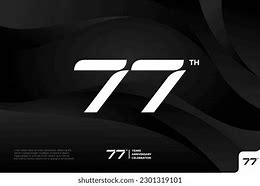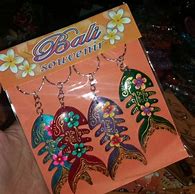
Apa itu Norma Penghitungan Penghasilan Neto?
Norma Penghitungan Penghasilan Neto (NPPN) adalah norma yang dapat digunakan oleh wajib pajak dalam penghitungan penghasilan neto dalam satu tahun pajak sebagai dasar penghitungan PPh Pasal 25/29 terutang. Norma penghitungan ini bertujuan untuk menyederhanakan penghitungan untuk mencari penghasilan neto. Setelah mendapatkan besaran penghasilan neto, wajib pajak dapat menghitung besaran PPh terutang untuk kebutuhan pembayaran dan pelaporan pajaknya. Bagaimana caranya, dan siapa yang dapat menggunakan norma penghitungan ini? Simak selengkapnya dalam artikel ini.
Our teams operate on a global scale to support customers around the world with an extensive range of product solutions to meet every need. Our innovative joining solutions are used in water supply, irrigation and drainage systems, vehicles with conventional and alternative drive systems, ships and aircraft, as well as buildings and infrastructure systems.
We have a global network of production sites and sales offices in Europe, North, Central and South America and the Asia-Pacific region. Our headquarters are located in Maintal near Frankfurt/Main. NORMA Group SE is listed on the Frankfurt Stock Exchange in the regulated market (Prime Standard) and is a member of the SDAX.
In order to verify your identity when registering at NORMA, NORMA would like to perform a check based on your passport.
You can send us a copy of your passport that is partly shielded, but at least the following details will have to be visible:
You can shield all the other information, including your picture. On the copy of your passport you can write down ‘for identifying purposes only’ and add the date. After the check NORMA will delete the copy of your passport. If you object to sending us a copy of your passport, you can always make an appointment to visit us for identification and also sign the exploitation agreement while you are here.
Would you like to make this site your homepage? It's fast and easy...
Yes, Please make this my home page!
DAFTAR NORMA PENGHITUNGAN PAJAK PENGHASILAN WAJIB PAJAK ORANG PRIBADI (Ringkasan)
Jenis Usaha Menurut KLU
Bengkel : elektro, motor, tak bermotor, jam & perhiasan, mesin kantor, alat olahraga
Dagang alat pertanian
Dagang perabot rumah tangga
Industri barang perhiasan, tukang emas
Industri Tekstil / Pakaian Jadi
Jasa hiburan dan kebudayaan
Jasa komunikasi, wartel, radio
Pakan ternak (dagang)
Pedagang eceran bahan bangunan
Pedagang eceran barang kelontong
Pedagang eceran hasil bumi
Pedagang eceran meubel
Pedagang pakaian jadi
Pekerjaan bebas bidang medis
Selepan padi, dsb (pengupasan hasil pertanian)
Jalan Gatot Subroto, Kav. 40-42, Jakarta 12190 Telp: (+62) 21 - 525 0208
Dokumen ini diketik ulang dan diperuntukan secara ekslusif untuk www.ortax.org dan TaxBaseX. Pengambilan dokumen ini yang dilakukan tanpa ijin adalah tindakan ilegal.
PERATURAN DIREKTUR JENDERAL PAJAKNOMOR PER - 17/PJ/2015TENTANGNORMA PENGHITUNGAN PENGHASILAN NETODIREKTUR JENDERAL PAJAK,
Menetapkan :PERATURAN DIREKTUR JENDERAL PAJAK TENTANG NORMA PENGHITUNGAN PENGHASILAN NETO
Petunjuk penggunaan Norma Penghitungan Penghasilan Neto adalah sebagaimana tercantum dalam Lampiran IV Peraturan Direktur Jenderal Pajak ini.
Dengan berlakunya peraturan ini, maka Keputusan Direktur Jenderal Pajak Nomor KEP-536/PJ./2000 tentang Norma Penghitungan Penghasilan Neto Bagi Wajib Pajak Yang Dapat Menghitung Penghasilan Neto Dengan Menggunakan Norma Penghitungan dinyatakan tidak berlaku.
Peraturan Direktur Jenderal Pajak ini mulai berlaku sejak Tahun Pajak 2016.
Ditetapkan di Jakarta
pada tanggal 10 April 2015
DIREKTUR JENDERAL PAJAK,
SIGIT PRIADI PRAMUDITO
Dokumen ini diketik ulang dan diperuntukan secara ekslusif untuk www.ortax.org dan TaxBaseX. Pengambilan dokumen ini yang dilakukan tanpa ijin adalah tindakan ilegal.
Norma Penghitungan Penghasilan Neto (NPPN) adalah norma yang dapat digunakan oleh wajib pajak dalam penghitungan penghasilan neto dalam satu tahun pajak sebagai dasar penghitungan PPh Pasal 25/29 terutang.
Syarat Menggunakan Norma Penghitungan Neto
Dasar hukum norma penghitungan neto ini tercantum dalam Undang-Undang Republik Indonesia Nomor 36 tahun 2008 tentang Perubahan Keempat atas Undang-Undang Nomor 7 Tahun 1983 Tentang Pajak Penghasilan pada pasal 14, dan dijelaskan lebih dalam di Peraturan Direktur Jenderal Pajak Nomor Per-17/PJ/2015 Tentang Norma Penghitungan Penghasilan Neto. Syarat wajib pajak untuk menggunakan norma penghitungan ini adalah:
Mengutip juga dari laman Pajak.go.id, wajib pajak orang pribadi yang boleh menggunakan NPPN harus memberitahukan ke Ditjen Pajak dalam jangka waktu 3 bulan pertama dari tahun pajak yang bersangkutan. Jika tidak, wajib pajak dianggap memilih menyelenggarakan pembukuan.
Jika wajib pajak badan atau orang pribadi yang melakukan pembukuan, tidak atau tidak sepenuhnya melakukan hal tersebut serta tidak bersedia memperlihatkan pembukuan maupun bukti-bukti pendukungnya, penghasilan netonya dihitung dengan menggunakan NPPN.
Bagaimana jika wajib pajak memiliki lebih dari satu jenis usaha? Maka penghitungan penghasilan netonya dilakukan terhadap masing-masing jenis usaha atau pekerjaan bebas dengan memperhatikan pengelompokan wilayah pengenaan norma. Penghasilan neto wajib pajak yang memiliki lebih dari satu jenis usaha adalah penjumlahan penghasilan neto dari masing-masing jenis usaha atau pekerjaan bebas yang dihitung.
Sekilas Perbedaan Antara Pencatatan dan Pembukuan
Wajib pajak yang dapat menggunakan NPPN harus menyelenggarakan pencatatan. Sedangkan wajib pajak yang tidak menggunakan NPPN harus menyelenggarakan pembukuan. Apa perbedaan antara pencatatan dan pembukuan?
Mengutip dari Undang-Undang KUP pasal 28 ayat (9), pencatatan adalah data yang dikumpulkan secara teratur tentang peredaran atau penerimaan bruto dan/atau penghasilan bruto sebagai dasar untuk menghitung jumlah pajak yang terutang, termasuk penghasilan yang bukan objek pajak dan/atau yang dikenai pajak yang bersifat final.
Sedangkan pembukuan, berdasarkan UU KUP pasal 1 ayat (29), adalah suatu proses pencatatan yang dilakukan secara teratur untuk mengumpulkan data dan informasi keuangan meliputi harta, kewajiban, modal, penghasilan dan biaya, serta jumlah harga perolehan dan penyerahan barang atau jasa, yang ditutup dengan menyusun laporan keuangan berupa neraca, dan laporan laba rugi untuk periode Tahun Pajak tersebut.
Besaran norma penghitungan penghasilan neto ini tidaklah sama. Jumlah persentase NPPN ini terbagi atas:
Kesemuanya daftar persentase dapat Anda lihat dalam lampiran PER-17/PJ/2015 tentang Norma Penghitungan Penghasilan Bruto.
Jadi untuk menemukan persentase norma penghitungan penghasilan neto yang tepat, cek kode klasifikasi lapangan usaha (KLU) yang cocok dengan SPT, kelompok usaha, dan tarif sesuai wilayah.
Rumus NPPN dan Contoh Soal
Bagaimana cara menghitung penghasilan neto ini? Secara sederhana, rumusnya adalah:
Penghasilan neto: Peredaran/Penghasilan bruto dari kegiatan usaha atau pekerjaan bebas dalam 1 tahun pajak x tarif persentase NPPN
Contoh penghitungannya:
Bapak Setia merupakan seorang agen asuransi yang berdomisili di Surabaya. Selama masa tahun pajak 2019, ia memiliki penghasilan bruto sebesar Rp500 juta. Berapa besaran penghasilan netonya?
Pertama-tama, mari mencari tarif persentase penghitungan netonya. Berdasarkan informasi pekerjaan dan domisili dari soal, tarif persentase NPPN Bapak Setia adalah 50% sesuai lampiran PER-17/PJ/2015. Maka, cara menghitungnya sebagai berikut:
Penghasilan neto: Rp500.000.000 x 50%
Penghasilan neto: Rp250.000.000
Selanjutnya untuk mendapatkan PPh terutang, wajib pajak harus mengalikan penghasilan neto dengan tarif Pasal 17 Undang-Undang PPh.
PPh Terutang: Penghasilan neto x tarif Pasal 17 Undang-Undang PPh
Khusus untuk wajib pajak orang pribadi, penghasilan neto tersebut harus dikurangi dengan penghasilan tidak kena pajak, baru dikalikan dengan tarif Pasal 17 Undang-Undang PPh.
PPh Terutang Wajib Pajak Orang Pribadi: (Penghasilan neto – penghasilan tidak kena pajak) x tarif umum Pasal 17 Undang-Undang PPh
Itulah pengertian, syarat, dan rumus norma penghitungan penghasilan neto. Jika memenuhi syarat sebagai wajib pajak yang dapat menggunakan penghitungan ini, pastikan untuk melakukan pencatatan atas peredaran bruto Anda, serta menemukan tarif persentase NPPN yang sesuai KLU dan domisili. Dengan begitu, Anda dapat melaporkan pajak dengan lebih mudah dan akurat.
Coba kemudahan lapor pajak secara online melalui OnlinePajak. Anda juga dapat hitung dan setor pajak melalui satu aplikasi yang sama, hanya dengan satu klik. Kemudahan mengelola pajak membantu Anda memenuhi kewajiban perpajakan sehingga menghindari sanksi pajak yang merugikan. Daftar sekarang dan nikmati kemudahan mengelola pajak bersama OnlinePajak.
0%0% menganggap dokumen ini bermanfaat, Tandai dokumen ini sebagai bermanfaat
0%0% menganggap dokumen ini tidak bermanfaat, Tandai dokumen ini sebagai tidak bermanfaat
We haven’t had any snow in Northern New Mexico since I arrived on November 19. It’s been sunny and unseasonably warm, with temperatures rising to the low 50’s. Great walking weather. At night, it dips down to the 30’s, just perfect for sleeping. I’m returning to Oaxaca on December 30, in time for our January 2, 2025, Women’s Creative Writing Workshop Retreat (we can accommodate one more person, if you are a last-minute decider!). My plan is to return to NM in early April to do my taxes and then go back until July. This is driven by (primarily) politics and climate. Since I’ve removed myself from WAPO and NYT alerts, and selectively reading Bulwark commentators, I’ve been feeling very calm. Mostly, I’m in a self-imposed news black hole. I know I have my head in the sand and one of these days, I’ll take it out and re-emerge into the world of fighting for justice, equality, and women’s health. For now, I’m content to look west out my kitchen window at the Rio Grande Gorge and east out my living room window at Taos Mountain, just barely snow-capped.
When I got to Taos I realized how many Oaxaca and Chiapas clothes were in my collection, most that I haven’t worn! I purchased them for their beauty, intricacy of weaving techniques, fine embroidery, and use of natural dyes. I have been fortunate to have met most of the people who made these garments. They live in remote villages and their families depend on the women for extra income that pays for health care, education, and food. One of my motivators, always, has been (and continues to be) to support indigenous makers throughout Mexico who are working to preserve traditional hand work.
This week, I’ll be offering a select part of my collection for sale. Scroll down. There are 17 pieces, priced at or below cost. More to come later this week. Keep your eyes open!
How to Buy: Send me an email to tell me which item(s) you want BY NUMBER and by name of item. Send me your name, mailing address, email address, and phone number. Tell me if you want to purchase using a Zelle transfer or a credit card. If you use a credit card, we add a 4% service fee. There is no extra fee for using Zelle. If you want Zelle, please tell me how your Zelle account is registered. For mailing, I will add a $14 packing and mailing charge. I am NOT putting these items for sale in the SHOP — only here!
Please purchase before December 18, 2024, when I’ll be preparing for the winter holidays and returning to Oaxaca for several months.
#1. From the Purepecha village of Ahuiran in Michoacan, Mexico, this amazing backstrap loomed poncho is embellished with dyed turkey feathers and fringes. It is made by Albertine Bautista Caballero, as talented as her more famous (now deceased) sister Cecelia Bautista Caballero, who created this pre-Hispanic method of individually tying the feathers individually into the warp threads. Measures 30″ wide x 30″ long. Sides are open. I could say, one size fits most! Just slip it over your head. Great holiday dressing. $395
SOLD. #2. A ruana is a pre-Hispanic garment that is similar to a poncho, but the front is open and the back is closed. This 100% hand-woven ruana features two 17″ wide panels in the front, and the back measures 34″ across. Length is 36″ front and back. The sides are open. The front panels can hang loose or you can drape one or both across your shoulders. This piece is from San Andres Larrainzar, Chiapas, from a cooperative that does very fine work. $225
#3. In Chenalho, Chiapas, this intricate embroidery is called dog paw. I’ve watched women do this during our visits to a cooperative on the outskirts of the village. It takes more time than you can imagine. The inset bits of color create a stained glass effect in this textile. The embroidery is on striped commercial fabric that is a combo of cotton and polyester. This is exactly what women in the village wear. They do not make anything differently for the tourist market, as many villages do. Measures 28″ wide x 22″ long. $195
#4. Hand embroidered and back-strap loom woven blusa from the village of Jamiltapec on the Oaxaca Coast. The fabric is embellished with figures woven into the cloth. The bodice is decorated with embroidery designs specific to this area. Measures 24″ wide x 23″ long. $65
#5. The cross-stitched bodice and sleeves set off this stunning blouse from Michoacan. 100% cotton. This textile is top-quality with dense and detailed hand-work. Measure 22″ wide x 27″ long. $145
#6. This amazing and colorful (tangerine and pink) huipil is woven on the backstrap loom in San Juan Colorado on the Oaxaca Coast. We know about a designer who has replicated similar, calls it a kaftan and sells it online for over $750 USD. This is a fun dress to wear in summer; perfect for winter with a white heat-tech long sleeve T-shirt for extra warmth. Measures 23″ wide x 40″ long. $285
#7. Jewel tones define this blusa embroidered in the Oaxaca Isthmus in the village San Juan Guichicovi. Yes, it’s embroidered by machine, but this is different. Each seamstress embroiderer guides the needle by hand. It’s a free-form process that we consider made by hand. Measures 19-1/2″ wide x 23-1/2″ long. $145
#8 is from one of the finest weaving villages in Oaxaca, Pinotepa de Don Luis, high in the mountains above the coast. This is a six-weft piece joined with a very intricate stitch called randa. All the figures are woven into the cloth — called supplementary weft. Woven by Monica, the daughter-in-law of the purple snail dyer Don Habacuc. Measure 26″ wide x 37″ long. $385
#9. There are extraordinary embroiderers in villages all along the Oaxaca coast. A traditional motif is the double-headed eagle, replicated here in the center. They are flanked by two roosters. This is all hand-work. The red ribbon adds pizzazz. Base fabric is excellent quality commercial manta cotton. Measures 22″ wide x 38″ long. $65.
SOLD. #10. A graphic beauty, this all-cotton blouse is woven on the back-strap loom in San Andres Larrainzar, Chiapas, from a cooperative we have been visiting for several years. Measures 23-1/4″ wide x 27″ long. $85
SOLD. #11. Khadi Oaxaca is an innovator in Oaxaca clothing design. They use the chakra (India’s spinning wheel) to process native white and coyuchi (brown) cotton into thread for weaving. This piece combines a warp of white thread with coyuchi cotton weft. The texture and softness is amazing. Measures 26″ wide x 34″ long. $195
#12. Embroidered whimsy from the Oaxaca coast. Look at the amazing detail on the collar with all the sea and land creatures from the neighborhood. On very good quality white manta cotton. Note the ribbon embellishments. 23″ wide x 24″ long. $125
#13. Ditto from #12. A different colorway in sunshine yellow with a square collar. Measures 24″ wide x 25″ long. $125
#13. This dress is hand-woven on the back strap loom in Zinacantan, Chiapas. It is an open weave which adds interest and texture. Here, you have two dresses in one. It’s reversible! Cotton. Suggest machine wash on cold separately or in a mesh laundry bag. 23-1/2×38. $125
SOLD 14. The Rina Dress. Rina is a weaver, dyer and designer. She is part of the Arte y Seda weaving family in Teotitlan del Valle. She designed, dyed (with wild marigold), and sewed this beautiful dress with hand-made shell button. The waist is 32” in circumference. The bodice is 22″ wide and 46” long. $165
#15. Fuschine dyed shawl, handwoven on the back strap loom in Santiago Ixtlayutla, near Pinotepa de Don Luis on the Oaxaca coast. Fuschine is not a natural dye but coveted by locals for its purple color. The designs in the cloth are woven with silk. This protein fiber absorbs the dye. The fabric is then carefully folded while wet so that the color intentionally bleeds mimicking the design on the cloth. Measures 24″ wide x 82″ long. $195
#16. Fuschine dye huipil, with stunning patterning woven into the cloth. Note the simple and beautifully executed randa (joining stitch). See #15 more more detailed description of the dye process. Measures 31″ wide x 48″ long. $495.
SOLD. #17. It’s rare to find this hand-woven textile from the Oaxaca coast. It is no longer being woven in its village of origin. We found this in a trunk on our last visit to Pinotepa Nacional — in perfect condition. A true collector’s piece and definitely wearable. Measures 40″ wide x 38″ long. $245
Formulir Norma Peng Neto 2019























